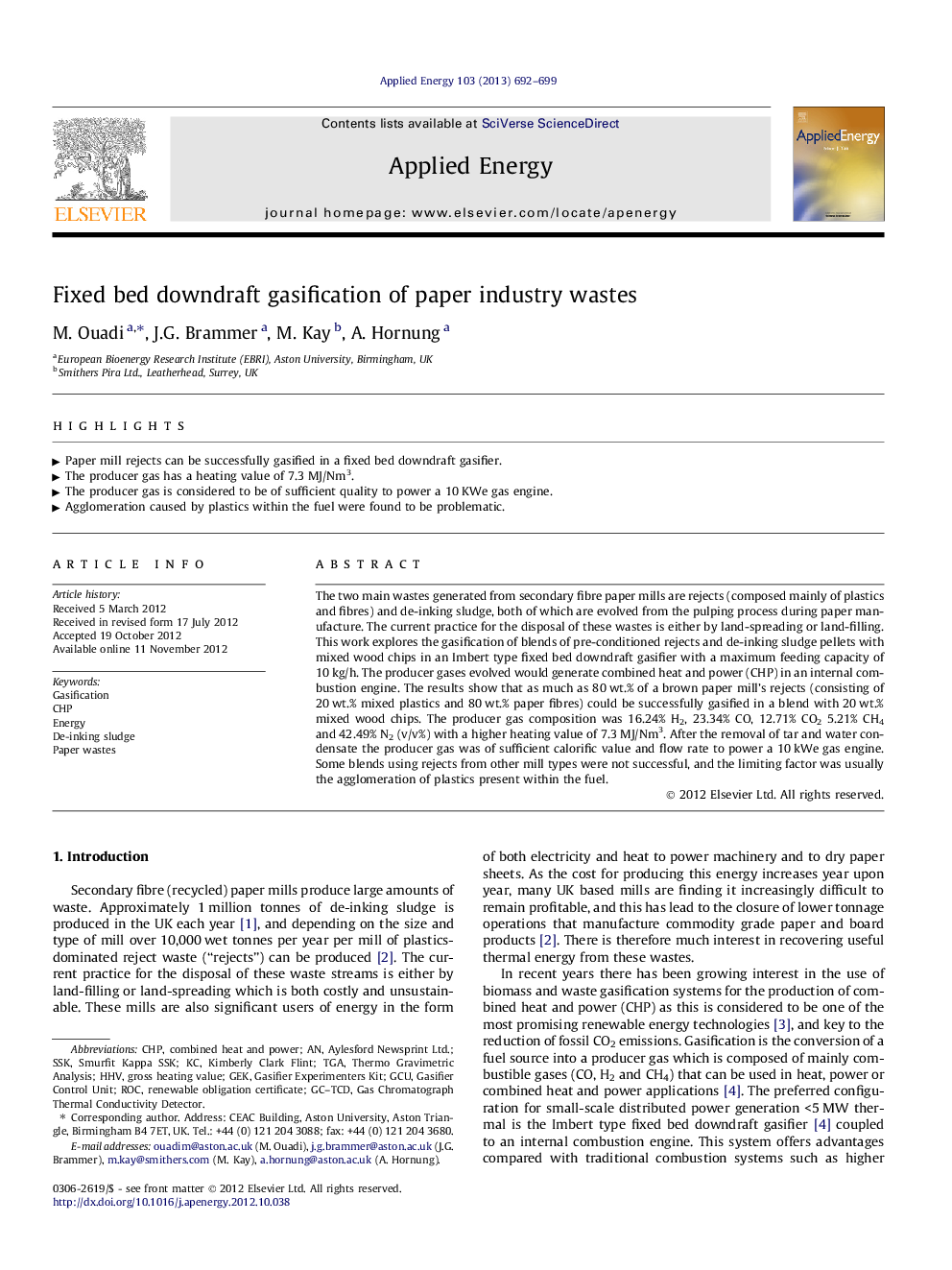| Article ID | Journal | Published Year | Pages | File Type |
|---|---|---|---|---|
| 243039 | Applied Energy | 2013 | 8 Pages |
The two main wastes generated from secondary fibre paper mills are rejects (composed mainly of plastics and fibres) and de-inking sludge, both of which are evolved from the pulping process during paper manufacture. The current practice for the disposal of these wastes is either by land-spreading or land-filling. This work explores the gasification of blends of pre-conditioned rejects and de-inking sludge pellets with mixed wood chips in an Imbert type fixed bed downdraft gasifier with a maximum feeding capacity of 10 kg/h. The producer gases evolved would generate combined heat and power (CHP) in an internal combustion engine. The results show that as much as 80 wt.% of a brown paper mill’s rejects (consisting of 20 wt.% mixed plastics and 80 wt.% paper fibres) could be successfully gasified in a blend with 20 wt.% mixed wood chips. The producer gas composition was 16.24% H2, 23.34% CO, 12.71% CO2 5.21% CH4 and 42.49% N2 (v/v%) with a higher heating value of 7.3 MJ/Nm3. After the removal of tar and water condensate the producer gas was of sufficient calorific value and flow rate to power a 10 kWe gas engine. Some blends using rejects from other mill types were not successful, and the limiting factor was usually the agglomeration of plastics present within the fuel.
► Paper mill rejects can be successfully gasified in a fixed bed downdraft gasifier. ► The producer gas has a heating value of 7.3 MJ/Nm3. ► The producer gas is considered to be of sufficient quality to power a 10 KWe gas engine. ► Agglomeration caused by plastics within the fuel were found to be problematic.
